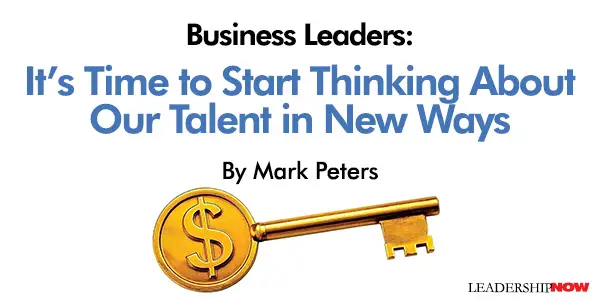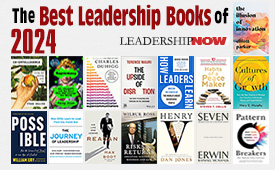 |
 |
06.11.25

Business Leaders: It’s Time to Start Thinking About Our Talent in New Ways
SUCCESSFUL enterprises are those that can command significant margins by doing a great job of understanding what drives their customers. They know their customers’ pain points, how their product or service addresses them, and what they can provide that no one else does. But while many of us think about our customers this way, we haven’t learned to think about our talent in the same way. Most of us think of employees as simply entering and exiting our enterprises randomly. But imagine if we got curious about talent — if we understood our talent — the same way we understand our customers. Imagine if we understood their values, pain points, and passions. How much more effective and resilient would our organizations and our people be? I’d be surprised if any honest CEO could say that they spend 10 percent of their time thinking about what’s important to the people who work for them. They may spend that time thinking about wages, benefits, and compliance. But rarely are they spending it trying to design opportunities that will be attractive to people. Many believe that the drive for retention or reducing turnover takes their eye off the ball. Yet worrying about what it costs, and not why people want to stay, is a misdirection. We would be much better off investing time, energy, and resources in connecting on those more profound values, pain points, and passions than on surface wage issues. Our lack of intentionality around talent creates waste in the system — for both us and the people who work for us. Think about how often we bring people in without truly understanding them. We say: “Here’s your job, and here’s what we’ll pay you for it.” But we don’t help create their purpose-drive connection to the organization. We may succeed at out-bidding our external competitors for the particular skill set we need, but if we don’t connect the person’s purpose to our own, the people working for us may not care whether we’re successful. There’s no “stickiness” to the relationship. We may pay a lot to get a certain kind of talent, but disregarding their passions and needs means we risk that person leaving for the next best salary offer in six months. Here are some considerations for how to retain our people: 1. Make employee upskilling available. In light of the automation era in which we’re embarking, the skills needed for future-oriented jobs are foremost on both employers’ and employees’ minds. Leaders have an opportunity to provide their own talent with the skills they need — and that the organization needs them to have — to meet the changes that are coming. It means moving beyond the current strategy of displace and replace. Afterall, training people who we already know are hard workers and have a good attitude is less of a crap shoot than hiring new people. 2. Offer access to professional development resources. Band together with other companies and tap into local community colleges or online training courses with the goal of equipping non-technical employees with essential skills for transitioning into new roles. Subsidize the cost of the courses as a way to build employee loyalty. Several companies already investing in retraining programs include Amazon, Accenture, AT&T, Bank of America, JPMorgan Chase, and Salesforce — among others. 3. Strive to understand the people who work for us. Sadly, many of us tend to put people in boxes — this person will be successful; this person doesn’t have it in them. Some workers may be efficient but don’t seem fully engaged. Yet, they could be outstanding if their work and skills aligned with their passion. One way to discover the dreams of the people who work for us is by initiating simple PDPs, or personal development plans. Start with a few people and see how it goes and what you learn. 4. Connect to community social services. As employers, we are well-positioned to offer stabilizing benefits so people will be able to work through some destabilizing complexities. Without finger-pointing, we can build the framework that makes success possible. Sharing wrap-around services, such as affordable housing, childcare, healthcare providers, and more, that are critical to the success of individuals. (There is a model for this: www.grsource.org.) By offering career-stabilizing benefits for our talent, we add value that supports our people, our businesses, and our communities. Investing in our people and encouraging them to take advantage of personal and professional development opportunities not only helps them prepare themselves for the future, but enables us to differentiate our enterprises as great places to work. Through thinking about our talent in new ways, we tap the power of compounding.  
Posted by Michael McKinney at 06:31 PM
|
BUILD YOUR KNOWLEDGE
 

How to Do Your Start-Up Right STRAIGHT TALK FOR START-UPS 
Grow Your Leadership Skills NEW AND UPCOMING LEADERSHIP BOOKS 
Leadership Minute BITE-SIZE CONCEPTS YOU CAN CHEW ON 
Classic Leadership Books BOOKS TO READ BEFORE YOU LEAD |